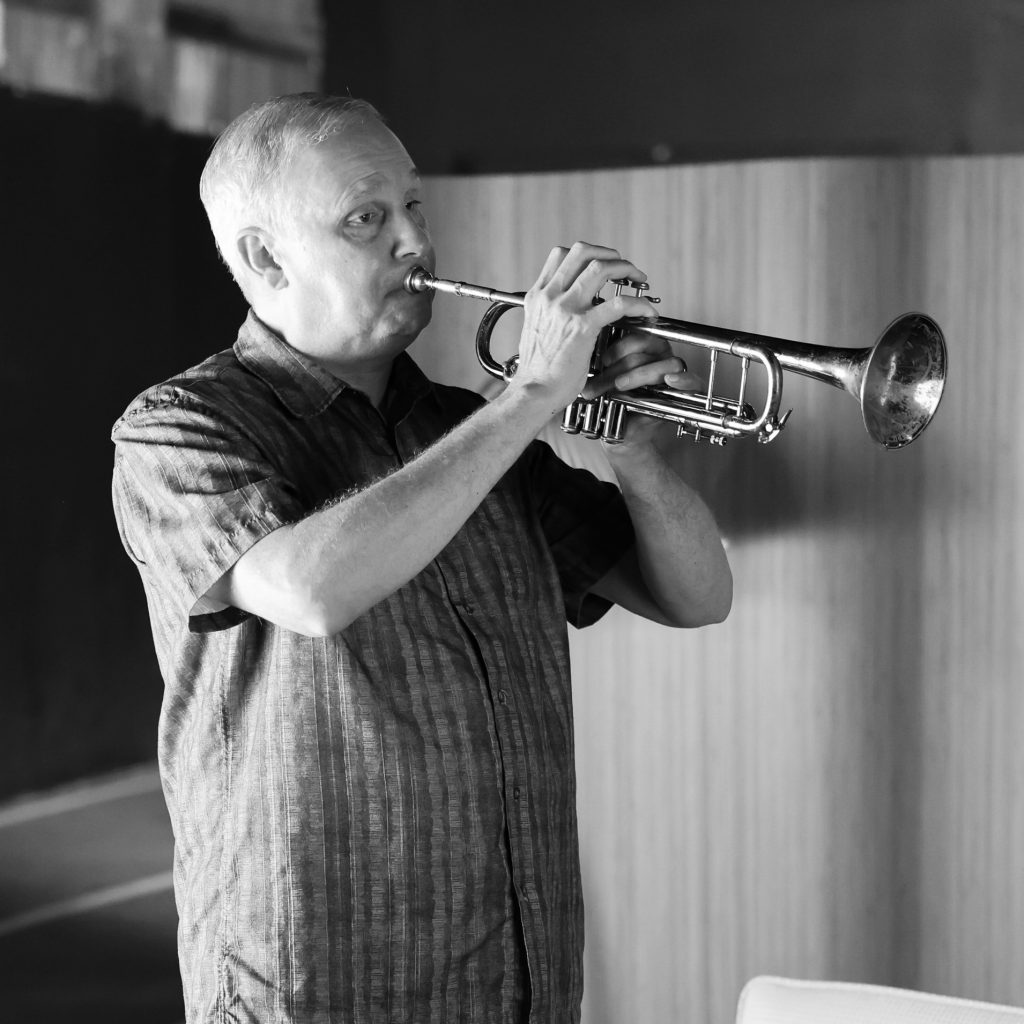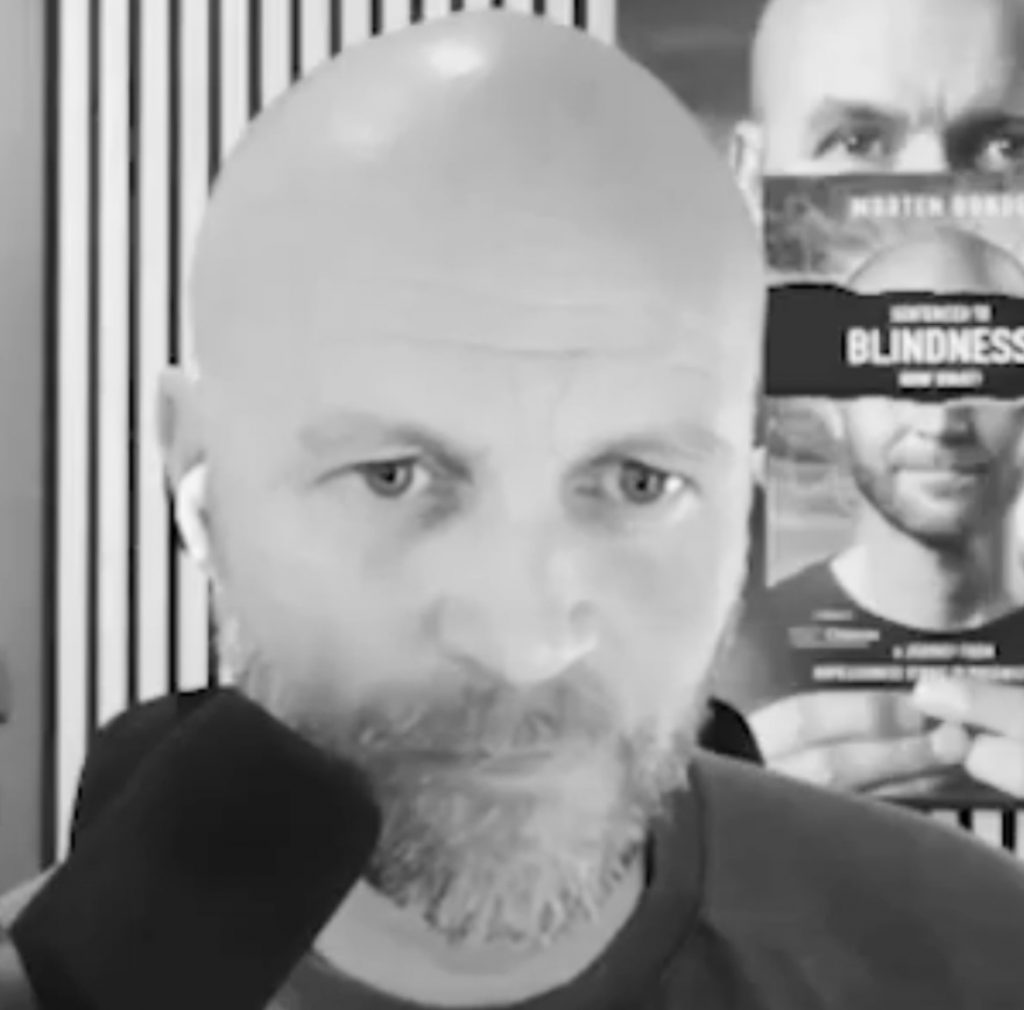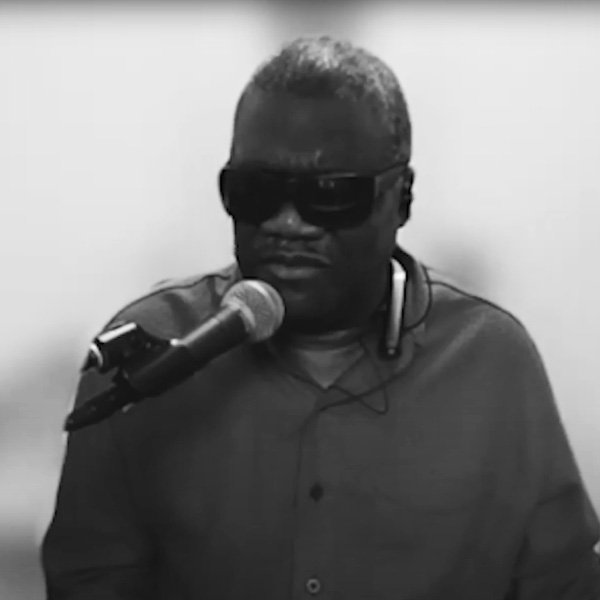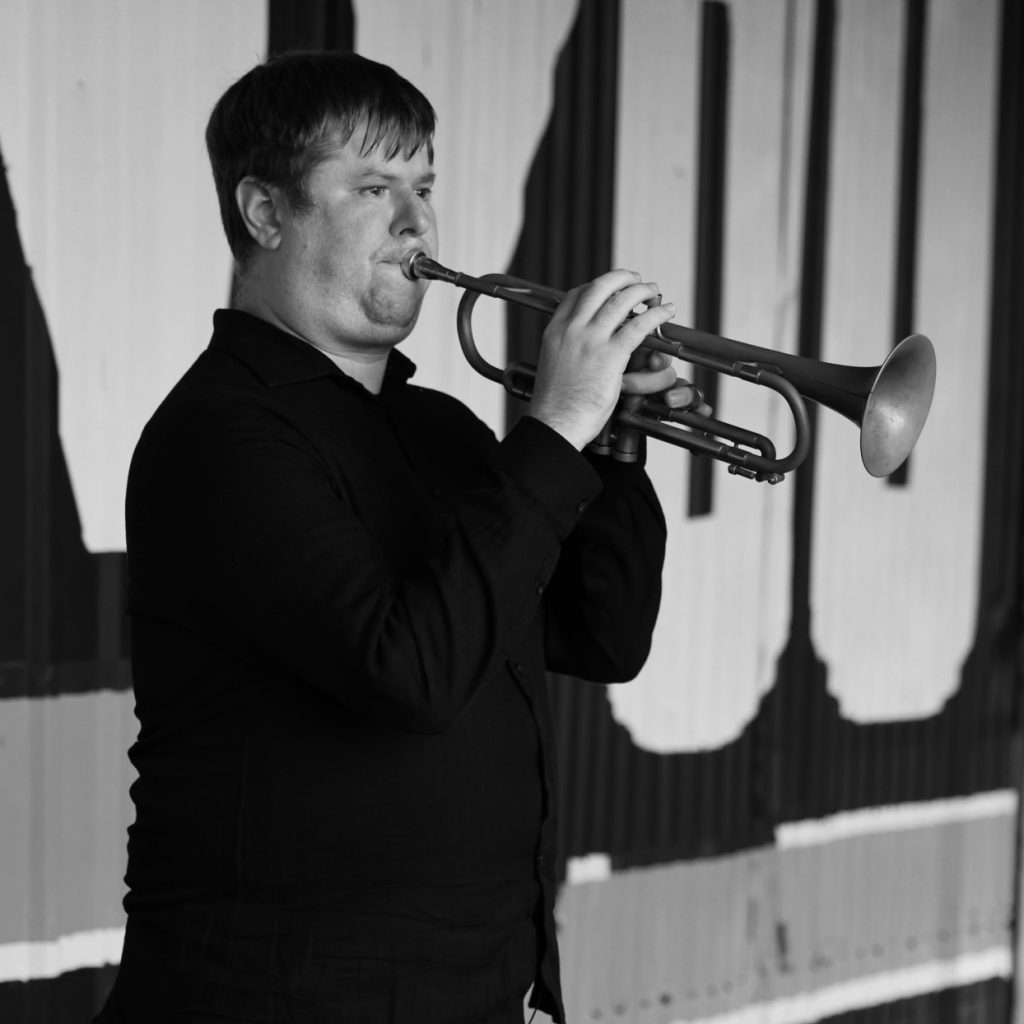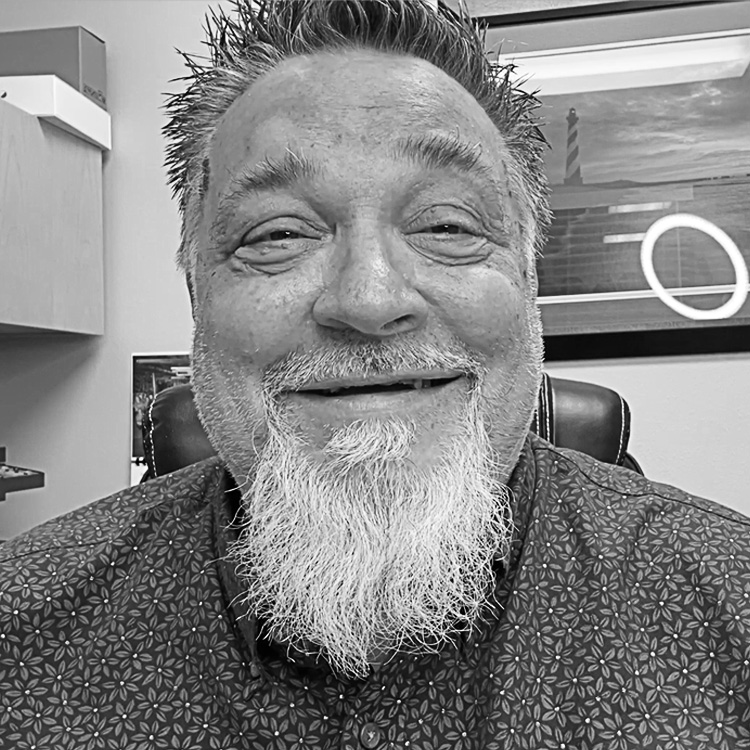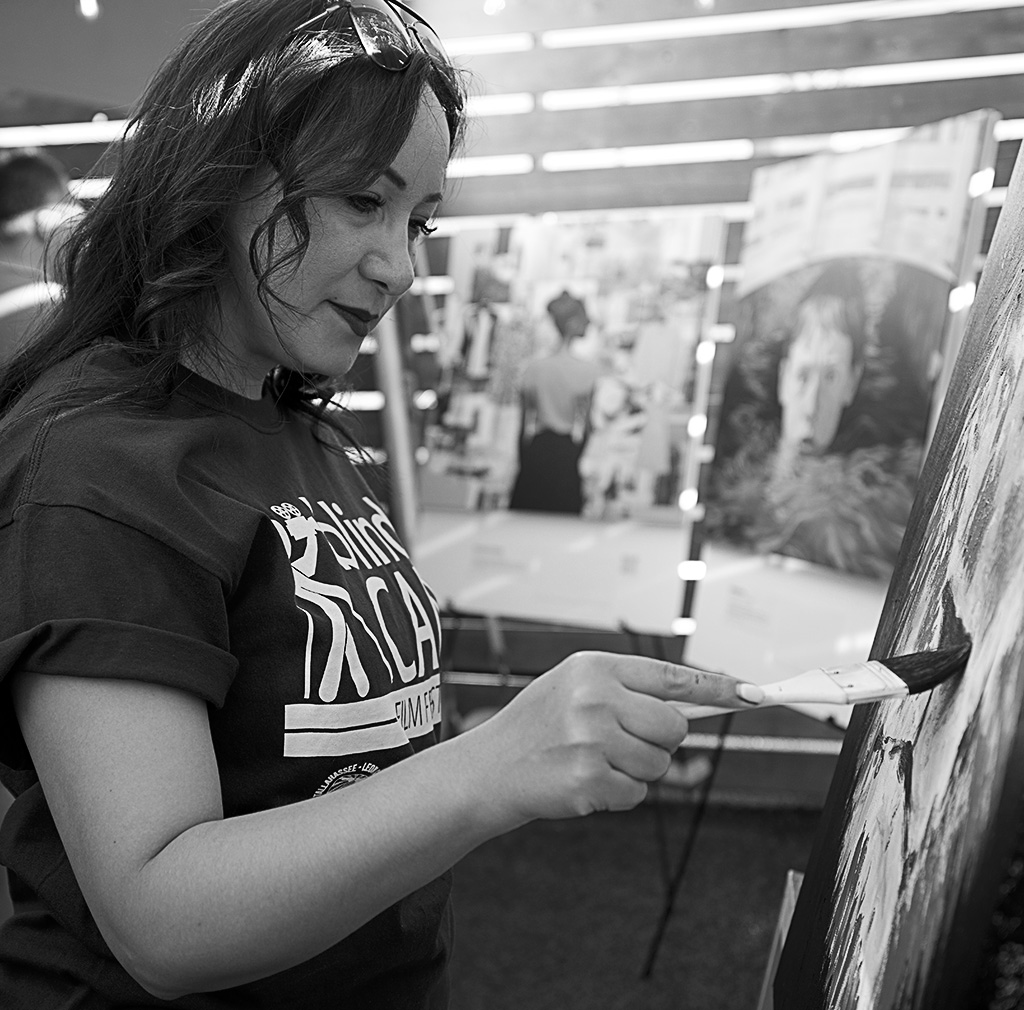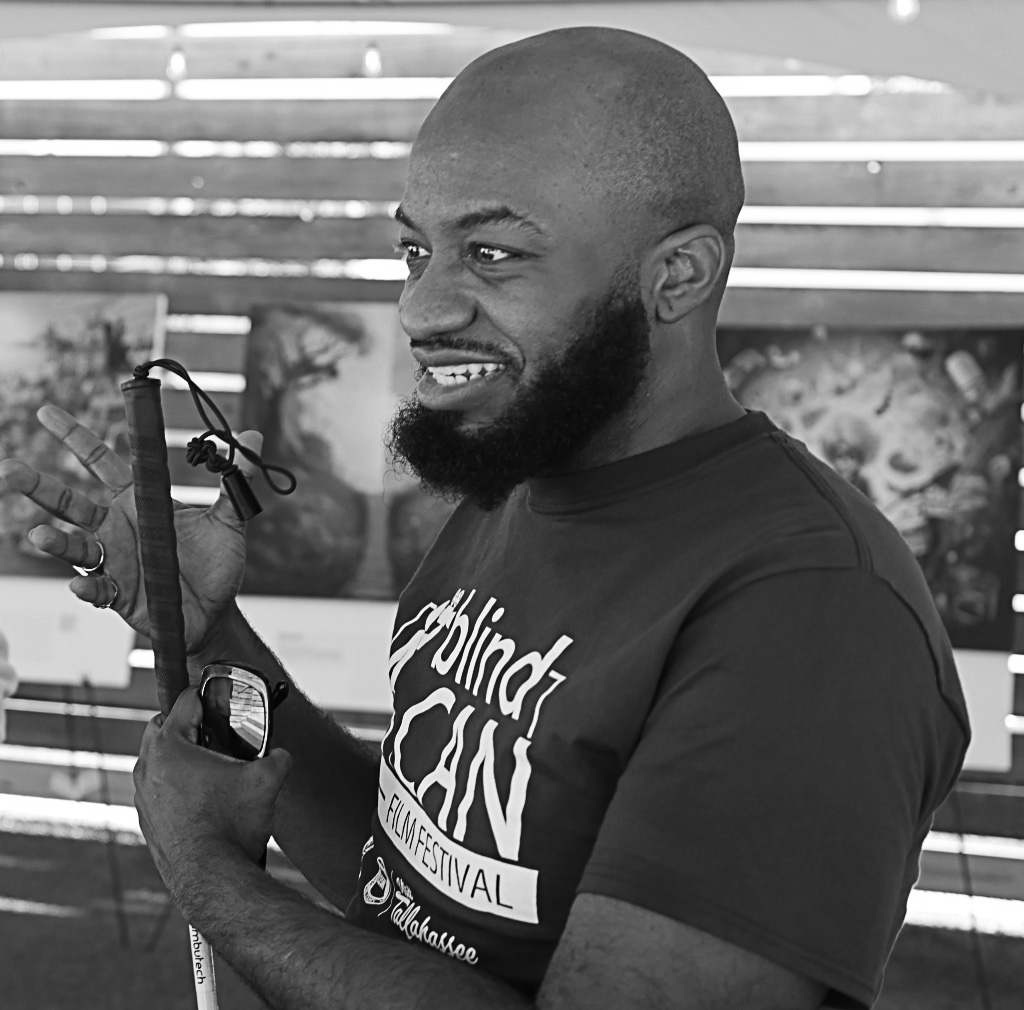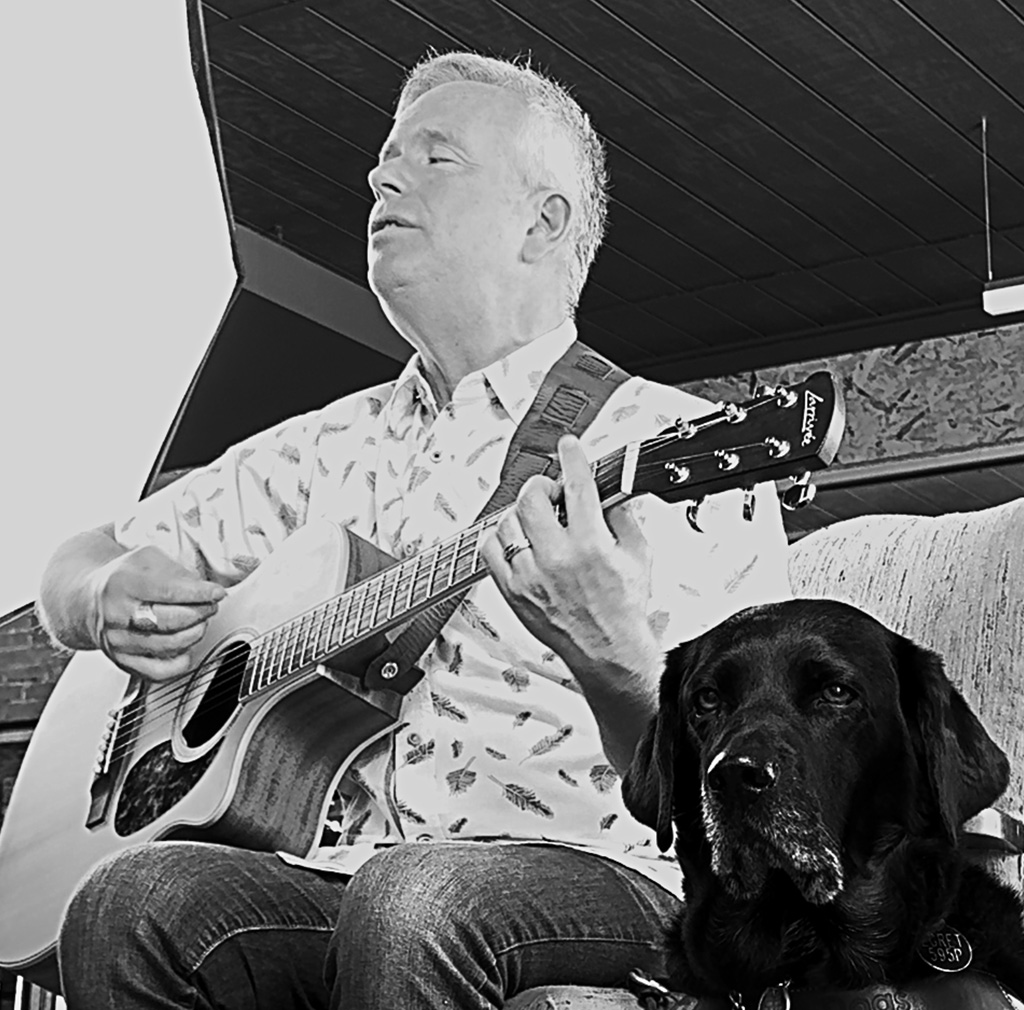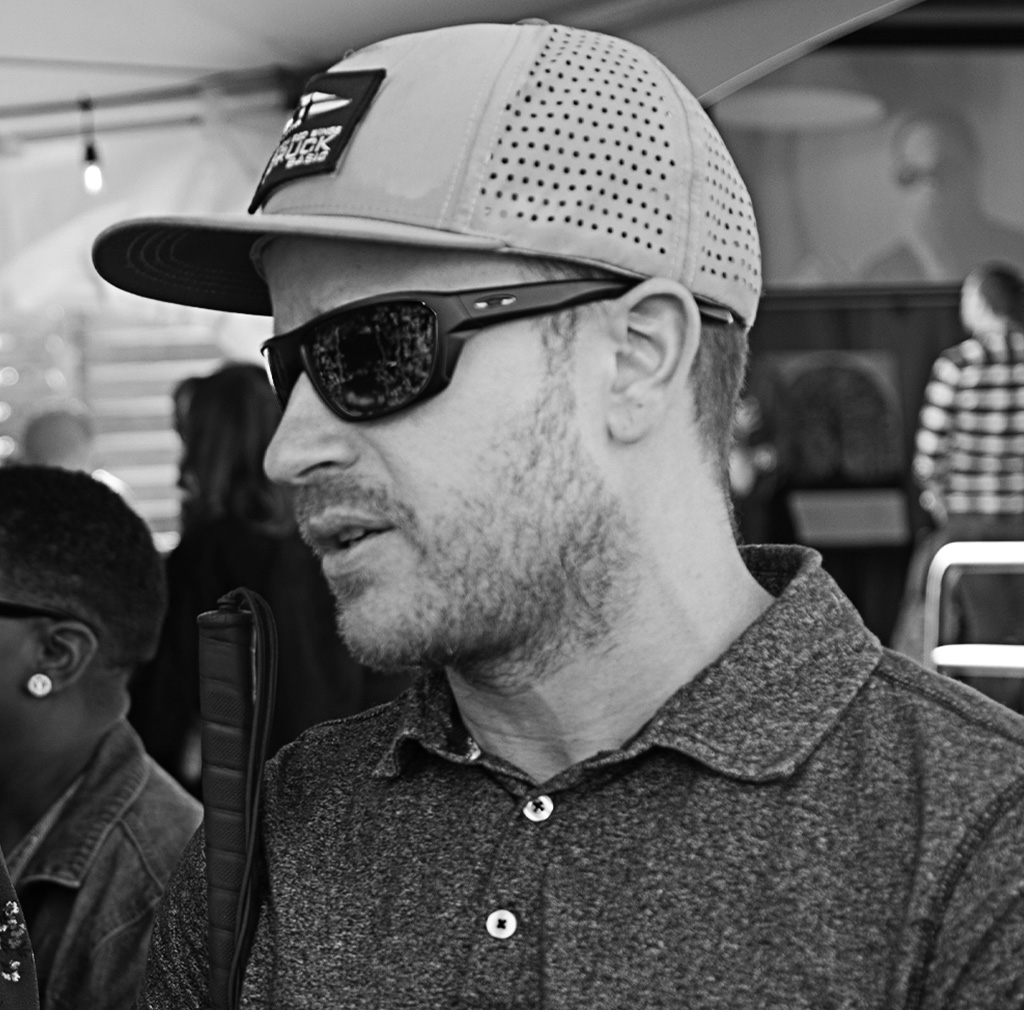CRAIG ELLIS

BACK OF A HARLEY

Foundational quote for image generation:
“I also rode Harleys my whole adult life until I lost my vision. It’s one of those hobbies that kind of gets in your blood. It’s part of, you know? And I’ve seen a whole lot of this country on the back of a Harley. And that’s still, that’s the one thing I really, I’m gonna be honest, haven’t gotten over yet. I could watch cars go by all day long, but you let a Harley go by with the right pipes on it. And it’s like, rips your heart out, you know.”
The image features a man, presumably representing Craig Ellis, sitting astride a motorcycle. He is depicted from the waist up, his head tilting toward the sun. His attire consists of a classic biker’s leather jacket, gloves, and a helmet with protective goggles pushed up on his forehead. The man has his eyes closed, and he seems to be soaking in the sunlight on his face, as he appreciates a moment of contentment and freedom
The background is awash with dramatic clouds, illuminated from behind by the sun’s rays which filter through in beams, creating a warm atmosphere. The lower part of the sky is tinged with blue, suggesting either dawn or dusk, and lending a quiet sense of stillness to the piece.
The man’s serene expression captures a mix of nostalgia and acceptance. His upward gaze is one of longing and remembrance, and an emotional reflection of losing a cherished experience due to vision loss and the onset of macular degeneration.
Yet, there is also a sense of peace, and a determination to savor the world in new ways.
LIGHTHOUSE OF HOPE

Foundational quote for image generation:
“We’re shining a light of hope. I said earlier the first thing we give them is hope. So, the first time they see that light is the time I want them to realize that there’s hope and there is a future. We really want to see everyone realize their full potential. We let them set their own goals, but we make sure that they’ve got the skills and support to get there.
Hope is the light shining out of the lighthouse, and that’s exactly the way we approach things.”
The image is a visually striking and symbolic artwork depicting a surreal landscape of light, darkness, and hope. In the center of the piece, there is a face silhouetted in black against a gradient background that transitions to a luminous horizon. The figure’s hair transitions into waves of color blending into the sea and sky . The hair and waves are rendered in soft cream, beige, and white tones, with intricate swirling patterns that give a sense of movement and fluidity.
In essence, the piece encapsulates the beacon of hope that the East Texas Lighthouse represents for the blind community, underscoring the message that there is always light, support, and a path forward. The transition from dark to light signifies the progression from despair to hope, much like the transition from diagnosis to empowerment that individuals often experience.
This mirrors the emotional transformation that individuals with vision loss undergo, particularly as they engage with organizations like the East Texas Lighthouse for the Blind, which aims help them realize their full potential.
TELEPHONE POLES

Foundational quote for image generation:
“ I started noticing straight lines appearing crooked, which is one of the classic symptoms of early onset of the macular degeneration. I was driving down the highway and all the telephone poles looked like they went straight up and then they bent over at the top. And when I asked my son, “What do you think they’re going to do about those poles? They need to do something.” My son thought I was having a stroke. He was like, “Dad, those things are straight as an arrow.”
The image displays a vivid landscape with a road stretching off into the distance. The setting is under a dramatic sky, teeming with swirling clouds that convey a sense of movement. These clouds are rendered in shades of dark green and blue, contrasting with the bright yellow and orange tones near the horizon.
Dominating the scene are telephone poles lining the road, their lines stretching into the distance and converging at a vanishing point. They are depicted with exaggerated angles, which warps the otherwise straight lines. The road is a deep gray, bordered by dashes of reflective white paint, leading the viewer’s eye through the composition.
The telephone poles are symbolic of the beginning of Craig’s difficult journey living with macular degeneration and the uncertainty of progressing vision loss. Yet, the path continues forward, symbolizing perseverance and the drive to continue.
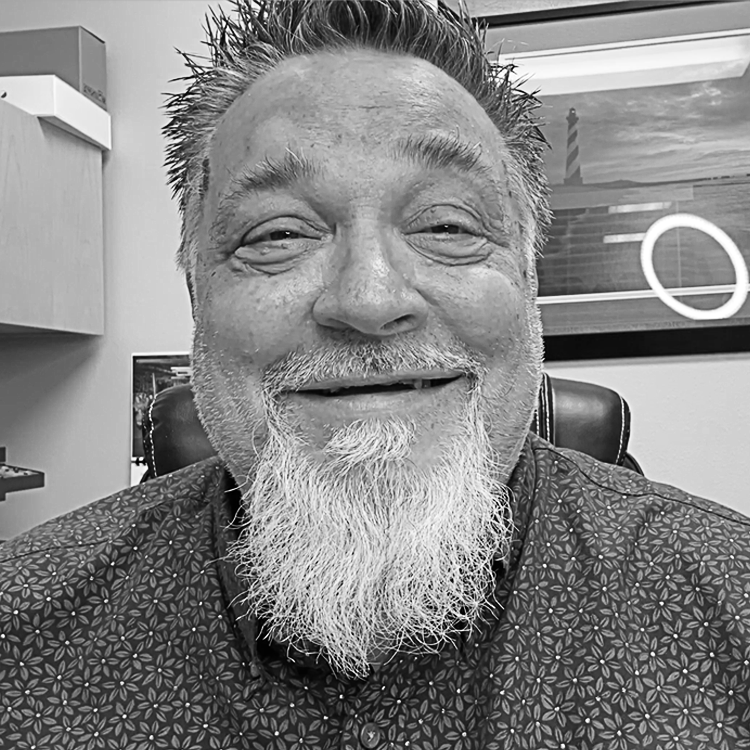
ABOUT CRAIG

CRAIG ELLIS
Blindness Advocate
Craig has been with East Texas Lighthouse for the blind since 2011. He began by working in Inventory Control as the Inventory Planner at Horizon Industries. While at Horizon, Craig created and coordinated a stocking work boot program, that drastically improved turn-around time on orders to Texas Industries for the Blind, TxDOT, and the DPS. Because of his work on the boot program, he was named the TIBH Artie Lee Hinds State of Texas Employee of the Year in 2016. His experience includes 12 years in management working with two Texas based grocery companies as well as owning and managing his own floor covering business for 13 years.
Craig started working for The Lighthouse Client Services in 2016 as the Employment Services Specialist, and in 2020 was promoted to Community Relations Administrator for East Texas Lighthouse for The Blind. This position involves all aspects of public relations, marketing, and community relations building. He is also in his fourth year of serving as an advocate with the NIB Advocates for Leadership and Employment program. In 2023, Craig was chosen as the NIB Milton J. Samuelson Career Achievement Award and was named NIB National Employee of The year.
ARTISTS



